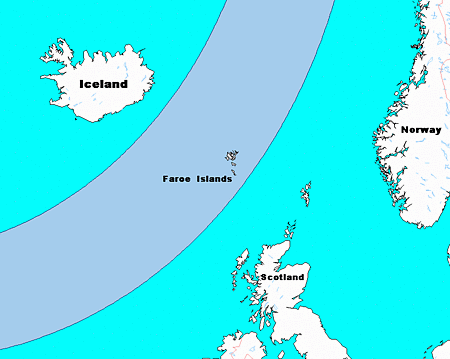Deaf Travel12th March 2015
Total Eclipse Will Be A Wonderful Sight
Between 8.42 and 10.50 on Friday 20th March, Northern Europe will enjoy a rare solar eclipse

On Friday 20th March 2015, a total solar eclipse of the sun will occur across the far Northern regions of Europe and the Arctic. The longest duration of totality for this eclipse will be 2 minutes and 46 seconds as viewed off the coast of the Faroe Islands. This will mark the last total solar eclipse in Europe for over a decade. The next not being until August 12, 2026.
The video below will give some safety advice about how to enjoy the eclipse without doing yourself any harm.
A total solar eclipse is one of the weirdest and most memorable natural phenomena I have seen before. We were with the British Deaf Astronomical Association (BDAA) in Turkey and it was a fantastic experience!!
 But this year in March, there is a very special opportunity to see a total solar eclipse which is close enough to the UK that we can get there and back in the same day. There will be two of us from the British Deaf Astronomical Association flying to the Faroe Islands, myself and Don Andrews.
But this year in March, there is a very special opportunity to see a total solar eclipse which is close enough to the UK that we can get there and back in the same day. There will be two of us from the British Deaf Astronomical Association flying to the Faroe Islands, myself and Don Andrews.
To see the total eclipse properly, we have to be inside a narrow event corridor called the ‘path of totality’, but it is a fast-moving path (because the planet is rotating) and you have to be in exactly the right place at the right time.
 08.38: Start of partial eclipse
08.38: Start of partial eclipse
The disc of the moon first begins to intrude onto the disc of the sun, rendering it increasingly crescent-shaped. At this point we will put on our safety viewing glasses as it’s not safe to look directly at the sun otherwise. Glasses can be found in most newsagents attached to an astronomy magazine at the moment.
09.42: Totality
The sunlight glances horizontally between the mountains of the moon’s craggy surface to create a momentary sparkling effect called Baily’s Beads. Just after this, we will see if we are lucky to see a brief flash as the last bead expands on the silver silhouette to create the famous Diamond Ring effect. Even if we’re unlucky with the clouds, this is still one of the weirdest things you will ever experience, as day turns to night in seconds. Not surprisingly, birds aren’t keen on this phenomenon, and everything goes very quiet and still, also the temperature will drop.
After about 3 minutes at the point of maximum eclipse the Baily’s Beads shimmer at the edges, light will streak across the dark sky and the day begins to return.
10.50: Final eclipse contact
The eclipse will come to an end and we will have to wait another 11 years for the next opportunity in Europe.
During the rest of the morning, we will take a coach tour to explore Stremoy and enjoy a packed lunch, then go to Tórshavn for some free time in the capital. Afterwards we’ll take the opportunity to see something of the once-Viking, Faroe Islands which today arew part of the Kingdom of Denmark.
Remote, very far north, but surprisingly mild and rarely very cold even in winter, these Danish islands are almost a Scandinavian trade secret, an undiscovered archipelago of fjords, wild seas, rugged cliffs and hosts of puffins, guillemots, shearwaters and storm petrels.
 We will also see some old "grass ceiling" - the Faroes' houses are red and their roofs often made of grass, but until modern roofing materials came along this was the rural norm in Scandinavia.
We will also see some old "grass ceiling" - the Faroes' houses are red and their roofs often made of grass, but until modern roofing materials came along this was the rural norm in Scandinavia.
During the forward and back flights, we are also hoping to see Northern Lights too!
Eclipse Timings at Faroes Island and across Great Britain;
First contact: 08:42am
Start of totality: 09:43am*
Maximum totality: 09:45am*
End of totality: 09:46am*
Last contact: 10:50am
*After around 3 minutes the Baily’s Beads shimmer at the edges, light will streak across the dark sky and the day begins to return.
Article by Derek Rowley, British Deaf Astronomical Assoc
posted in Deaf Lifestyle / Deaf Travel
12th March 2015





